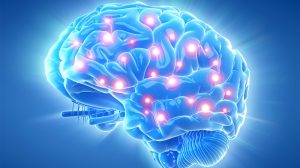Tramadol is a Schedule IV controlled drug that belongs to the class of opioid analgesics. This means that it is prescribed to help manage pain among individuals who suffer from osteoarthritis, fibromyalgia, or even those who experience acute pain after post-operation.
Even when you take Tramadol as prescribed by your physician, it is difficult to prevent yourself from experiencing physical dependence especially when you have used it for several weeks. Although it is known to be less potent than other opioid painkillers, Tramadol can still be addictive.
Detox is the initial step to removing yourself from the control of the substance in your body. Many would say that detoxing Tramadol is not dangerous, however; the risks are still unpredictable so it is best to always stay on the side of caution.
Understanding Tramadol
Unlike other opioids, Tramadol works differently in modifying how your body perceives pain. While it acts on your natural opioid receptors just like how other opioid analgesics do, it also increases your brain’s level of norepinephrine and serotonin.
This mechanism does not only make you find relief from pain but also allows you to feel more energized and happier. This kind of comfort is what entices other people to misuse or abuse the drug, not considering how this can cause great harm in the long run.
With these two different actions on the brain, Tramadol’s effect on the body, once it is flushed out from the system, will also bring an unusual set of withdrawal symptoms. Just like other opioids, the following occurs when detoxing Tramadol:
 Nausea
Nausea- Vomiting
- Diarrhea
- Stomachache
- Body pain
With Tramadol, the following are likely experienced on top of the previously mentioned conditions:
- Hallucinations
- Paranoia
- Depersonalization
- Panic attacks
- Disorientation
- Numbness of extremities
Some symptoms last for weeks. When this is the case, your condition is most likely termed as experiencing Post-Acute Withdrawal Syndrome, which can last up to a year or two. These are the potential psychological withdrawal symptoms:
- Anxiety
- Depression
- Mood swings
- Agitation
- Confusion
You seem to be dealing with an extremely bad flu when you start your detox. The headache and fatigue, accompanied by insomnia and loss of appetite can weaken your disposition during the process.
How Can Tramadol Detox Become Dangerous
Every person’s response to detox is distinct. Those who experience physical dependence after following their doctor’s prescription are likely to respond progressively by tapering off their doses. However, this will not be the case for those who have misused and abused the drug. Same thing with those who are vulnerable in terms of overall health condition.
Particularly, some people have already established a tolerance to extremely high doses while others have been used to combining Tramadol with other addictive substances. These are really serious cases that may likely experience the following life-threatening conditions during detox:
Dehydration
 Dehydration during detox is common and fatal. It occurs when your body is deprived of enough fluids that you usually need. During detox, you may experience vomiting, diarrhea, and even excessive sweating that can cause you to lose a lot of fluids.
Dehydration during detox is common and fatal. It occurs when your body is deprived of enough fluids that you usually need. During detox, you may experience vomiting, diarrhea, and even excessive sweating that can cause you to lose a lot of fluids.
When a person is dehydrated, the volume of the blood circulating in the body also decreases. To compensate for this loss, the heart beats rapidly, potentially causing increased heart rate and blood pressure.
Suicidal Ideations
Suicidal ideations are products of depression. Depression is oftentimes interlinked with substance addiction. Experiencing these disorders at once requires specialized treatment which may not be available in every rehab facility.
A combination of medication and therapy is known to be essential in responding to this kind of need. If left untreated, these ideations may magnify into suicide. Common signs of depression include isolation, loss of interest, and a state of hopelessness.
Seizures
Seizures manifest by experiencing an uncontrollable movement of the body which normally lasts less than 3 minutes. Those with a history of epilepsy are also vulnerable to episodes of seizures during detox.
When the brain is intoxicated with addictive substances, it experiences an abnormal electrical activity which results in seizures. Seizures are fatal because they can cause coma and even loss of breath.
Serotonin Syndrome
 Serotonin syndrome occurs with too much serotonin in the brain, something that Tramadol has the tendency to cause. Other factors that can trigger this is polysubstance abuse and taking a high dose during a relapse.
Serotonin syndrome occurs with too much serotonin in the brain, something that Tramadol has the tendency to cause. Other factors that can trigger this is polysubstance abuse and taking a high dose during a relapse.
This condition can be classified from mild to severe. A severe state can already cause death. This manifests through high fever, abnormal blood pressure and heart rate, losing consciousness, and seizures.
These life-threatening cases are rare and It is possible to prevent them by detoxing with medical care.
Coping with Tramadol Detox
The most effective remedy for detox is a combined treatment using medications and therapy. Tapering off doses is also a great means to reduce the intensity of painful conditions.
To somehow reduce the unpleasant condition brought by detoxification, you have to follow your doctor’s advice. They are the most reliable people who can treat you and aid you in your discomfort.
Apart from the availability of FDA-approved drugs for opioid withdrawal such as Methadone and Buprenorphine, studies have also shown how Benzodiazepines such as Clonazepam or Lorazepam help reduce withdrawal symptoms during detox.
While all these drugs come with a prescription, there are certain over-the-counter drugs that you can purchase to relieve specific illnesses such as headaches and body pain during detox.
As soon as your body recovers from the stressful phase of detox, which typically lasts for a week, you can take on therapy sessions for long-term recovery.
The 12-Step Program is the most common platform that most support groups follow to guide new members on their path to sobriety. There are other types of group therapy sessions available in different localities which you can find online.
Socialization with other patients is one of the benefits of the 12-step program. Also, its systematic process ensures everyone gets an equal chance of getting treated.
Some people also find individual therapies meaningful, while others actively engage in both. Either way, experts would always emphasize that medication alone is never enough to fully enjoy recovery. Therapies are essential.
